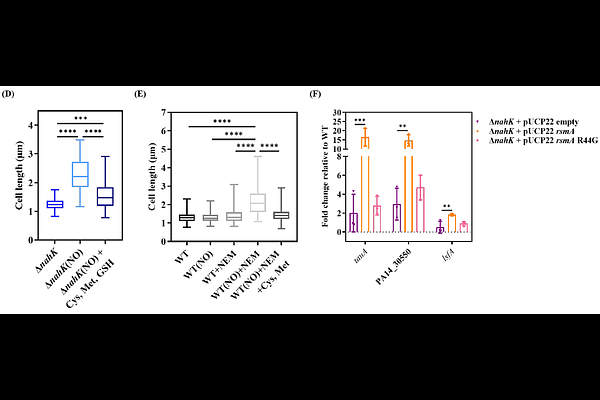The histidine kinase NahK in Pseudomonas aeruginosa is essential for nitric oxide-stress resistance in nutrient starved media

The histidine kinase NahK in Pseudomonas aeruginosa is essential for nitric oxide-stress resistance in nutrient starved media
Boon, E.; Anantharaman, S.; Fu, J.
AbstractBiofilms are communities of bacteria growing within a matrix composed of polymeric substances that act as a barrier to antimicrobials, making bacteria within a biofilm recalcitrant to conventional antibiotic treatments. This lifestyle of bacteria is especially relevant during its pathogenesis, as observed in the case of Pseudomonas aeruginosa infections of immunocompromised patients. However, pico- to nanomolar concentrations of nitric oxide (NO) have been shown to be efficient in triggering P. aeruginosa to disperse from biofilms, suggesting that a combination of NO exposure and antibiotic treatment may help in mitigating infections. In P. aeruginosa, the NosP-NahK two component system, which comprises a NO sensing hemoprotein, NosP, and its associated hybrid histidine kinase, NahK, has been proven to be necessary for NO mediated biofilm dispersal. NahK also has additional roles in biofilm formation, motility, denitrification and virulence, due to its regulation of a global post-transcriptional regulator RsmA. Here, we uncover a novel role of NahK in enhancing the resistance of P. aeruginosa to signaling concentrations of NO. Deletion of nahK sensitizes the strain to nanomolar levels of NO, resulting in DNA damage. Consequently, the SOS stress response pathway is induced, which causes phenotypes such as cell filamentation and cell clustering due to lysis-mediated release of extracellular DNA. Our data also indicate that increased susceptibility of the {Delta}nahK strain to NO is due to the antagonization of RsmA, and is restricted to amino acid starved media, suggesting that NahK may also have previously unappreciated roles in modulating amino acid metabolism.